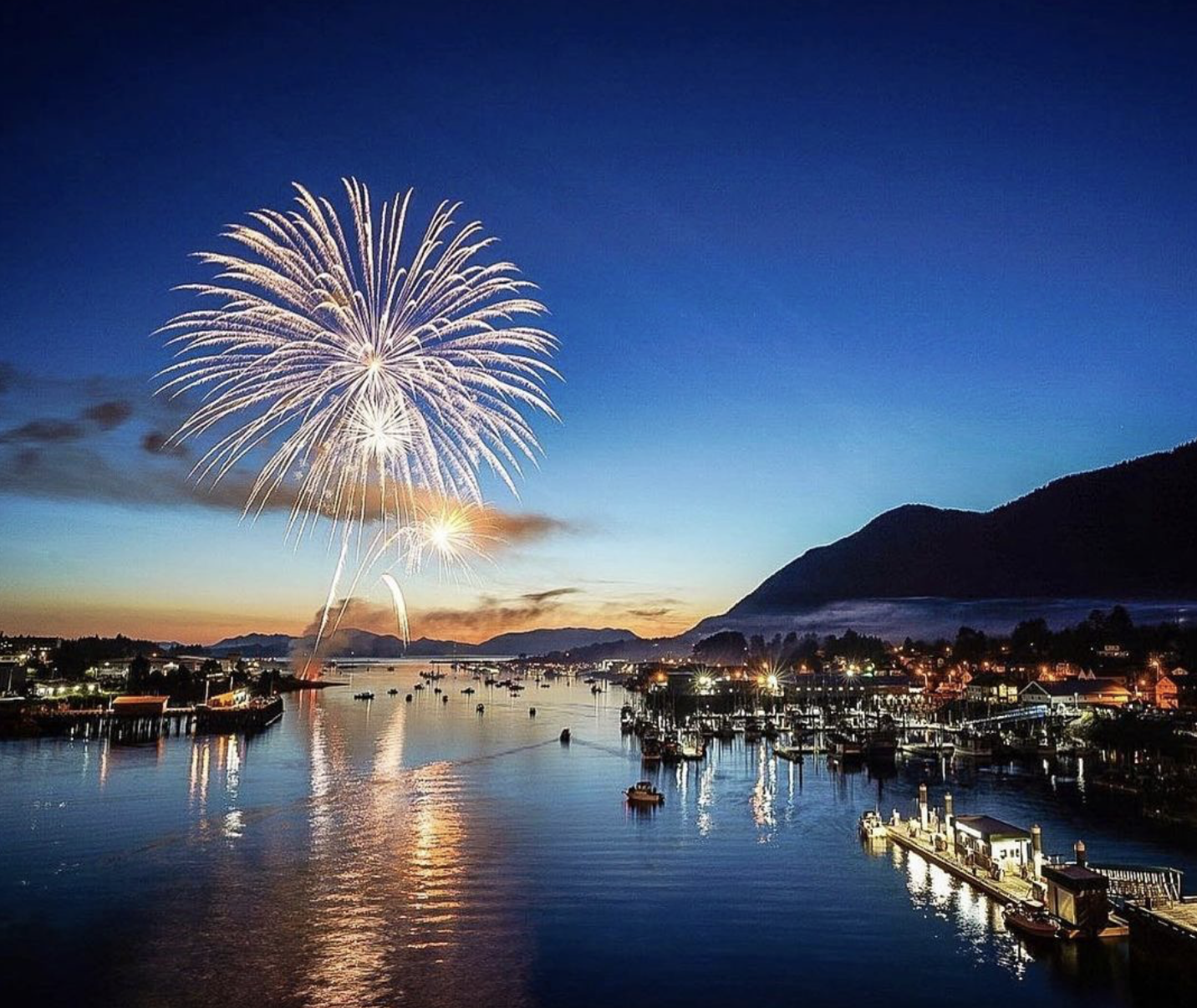15: Fireworks in Sitka by Derek Mazur
Today we’ve got a special guide to taking great shots of fireworks shows. This one comes to use from Sitka, Alaska.
Photographer: Derek Mazur
Original post on the Sitka tourism IG page
To recreate the stunning photo of fireworks over a waterfront at dusk, follow this highly detailed breakdown covering location scouting, timing, camera settings, composition, lighting, and post-processing.
Location Scouting
Select a Location:
Find a location with a clear view of the waterfront and the area where the fireworks will be launched.
Look for elevated vantage points, such as hills, bridges, or buildings, that provide a panoramic view of the scene.
Timing
Golden Hour and Blue Hour:
Plan to shoot during the blue hour (just after sunset) to capture the deep blue sky and the ambient light.
Ensure you are ready to shoot as the fireworks start, typically after dusk.
Camera Settings
Aperture (f-stop):
Use a small aperture (e.g., f/8 to f/16) to ensure a large depth of field, keeping both the fireworks and the foreground in sharp focus.
Shutter Speed:
Use a long exposure (e.g., 2-10 seconds) to capture the trails of the fireworks and the reflections in the water.
ISO:
Set a low ISO (e.g., 100-200) to reduce noise and maintain image quality.
Lens:
Use a wide-angle lens (e.g., 16-35mm) to capture the expansive landscape, fireworks, and reflections.
Composition
Rule of Thirds:
Position the horizon along the lower third of the frame to emphasize the sky and the fireworks.
Place the fireworks off-center, following the rule of thirds, to create a dynamic and balanced composition.
Leading Lines:
Use the waterfront and the reflections as leading lines to draw the viewer’s eye towards the fireworks and the skyline.
Incorporate boats, docks, and other elements to add interest and guide the viewer’s eye through the image.
Symmetry and Reflections:
Utilize the reflections in the water to create a symmetrical composition, adding balance and interest.
Ensure the reflections are clear and aligned with the main elements of the scene.
Lighting
Natural Light:
Rely on the natural light of the blue hour for a soft, even illumination. The ambient light will enhance the colors of the sky and the reflections.
Fireworks Light:
The fireworks themselves will provide additional light, creating bright and colorful trails that illuminate the scene.
Shooting Process
Tripod Use:
Mount your camera on a sturdy tripod to ensure stability during long exposures.
Focus:
Use manual focus to ensure sharpness in critical areas, such as the skyline and the fireworks.
Remote Shutter Release:
Use a remote shutter release or the camera’s timer to avoid camera shake during exposure.
Post-Processing
HDR Blending:
If you bracketed exposures, blend the images in post-processing software (e.g., Adobe Lightroom or Photoshop) to create an HDR image that retains detail in both highlights and shadows.
Color Correction:
Adjust the white balance to enhance the natural tones of the sky and the fireworks.
Increase saturation slightly to bring out the colors of the fireworks and the ambient light.
Contrast and Clarity:
Increase contrast and clarity to bring out details in the fireworks, the reflections, and the skyline.
Use selective adjustments to enhance the sharpness of the key elements while maintaining a soft background blur.
Sharpening:
Apply selective sharpening to the fireworks, reflections, and key elements in the foreground to make them stand out against the background.
Noise Reduction:
Apply noise reduction, especially in the shadow areas, to maintain a clean and high-quality image.
Final Adjustments:
Crop the image to refine the composition if necessary.
Make any final adjustments to exposure, highlights, shadows, and colors to ensure the image looks balanced and polished.
Practical Steps for a Similar Photo
Preparation:
Plan your shoot around the blue hour and the timing of the fireworks. Check weather conditions to ensure clear skies.
Equipment:
Bring a sturdy tripod, wide-angle lens, remote shutter release, and any necessary filters (e.g., ND filter for longer exposures).
Execution:
Arrive at the location early to set up and find the best composition. Be patient and ready to capture the changing light conditions and the fireworks.
Post-Processing:
Spend time in post-processing to blend exposures, adjust colors, and enhance details to achieve a stunning final image.
By following these guidelines, you can recreate a breathtaking photo of fireworks over a waterfront at dusk, with vibrant colors, sharp details, and dynamic composition.
